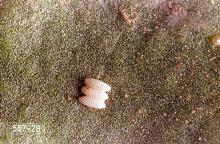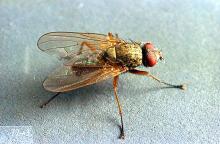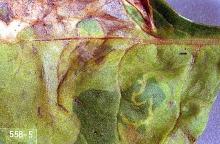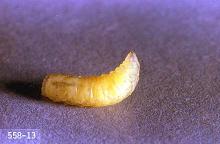Beet leafminer (Pegomya betae)
Spinach leafminer (Pegomya hyoscyami)
Pest description and crop damage Legless maggots, 0.5 inch long when mature, feed between the upper and lower leaf surfaces, leaving irregular transparent windows, blotches, and winding tunnels. Historically a common pest that rarely reached economically damaging levels, it is now an increasingly important pest in some local areas. Damage is of more concern early in the season during stand establishment; older plants should be able to tolerate more leafminer damage. Much smaller Liriomyza spp. leafminers may also attack sugar beet but are rare in our area.
Scouting and thresholds No formal economic thresholds exist for leafminer insecticide treatment decisions. If foliar sprays are used, they should be applied shortly after egg laying begins to reduce the number of larvae that are able to tunnel into leaves after hatching.
Management-biological control
Larvae often are highly parasitized by wasps. We do not yet know enough about arthropod natural enemies to suggest practical ways of manipulating and enhancing their effects other than avoiding any unnecessary insecticide applications.
Management-chemical control
Protect plants early season in high-risk areas with at-plant (Table 1) and/or post-emergence (Tables 1-2) insecticides. Extensive studies in Idaho have shown that seed treatment has similar efficacy to well-timed foliar-only treatments.





